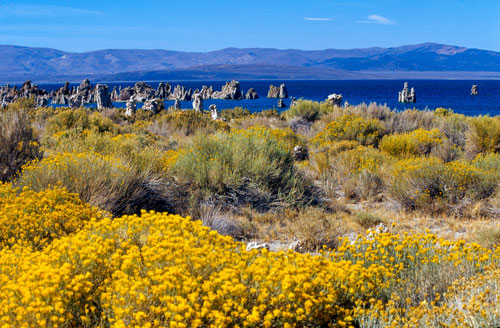Clean Water Act Success Story: Mono Lake

Mono Lake, and its tributaries, might look much drier than it does today, if not for the Clean Water Act.
Or it might not exist at all.
The lake is in Mono County, bordering Nevada in eastern central California. It takes its name from a Native American Paiute tribe and serves as a vital habitat for millions of migratory and nesting birds.
The fact that Mono Lake has a current water level of 6379 feet above sea level, to protect its ecological health, owes much to the landmark Clean Water Act (CWA) of 1972.
A half a century has passed since Congress established the CWA as the basic structure for restoring and maintaining the integrity of the nation's water, including the waters of the National Park System.
The Act recognized the primary role of the States in managing and regulating the nation's water quality. This included the designation “Outstanding National Resource Waters" (ONRW). That designation offers special protection for waters of ecological significance.
In California there are two bodies of water with the ONRW designation: Mono Lake and Lake Tahoe.
The State Water Board established Mono Lake as an ONRW in 1994, when it adopted “Decision 1631” which amended the City of Los Angeles’ water rights licenses so that diversions of water were consistent with protecting public trust values at Mono Lake.
Diversions had become an issue at Mono Lake ever since the Los Angeles Department of Water & Power began diverting water from the lake in 1941 to serve the growing water needs of Los Angeles. Eventually, the lake levels dropped by as much as 45 feet, which increased salinity and altered aquatic and bird nesting habitats. In 1983 the California Supreme Court found in favor of the Mono Lake Committee against LADWP when it ruled that the public trust doctrine overrides prior water rights.
Since 1994 the State Water Board has taken other actions to protect Mono Lake that stem from the Clean Water Act. This includes the 2021 approval of new requirements for the restoration of approximately 20 miles of creek and fisheries habitat in streams and tributaries that flow into Mono Lake. This represents a significant step forward in restoring the stream ecosystems in the Mono Basin.



